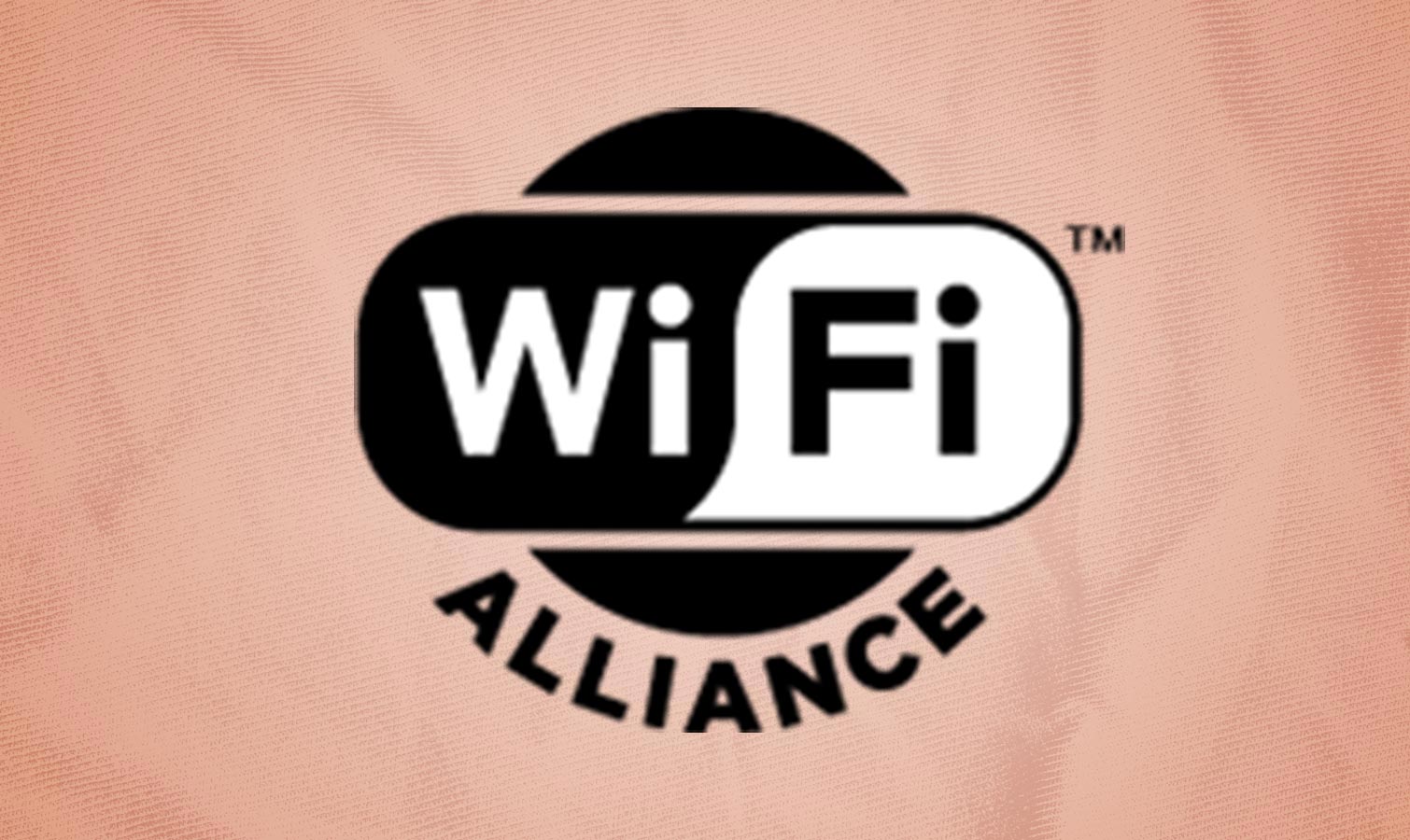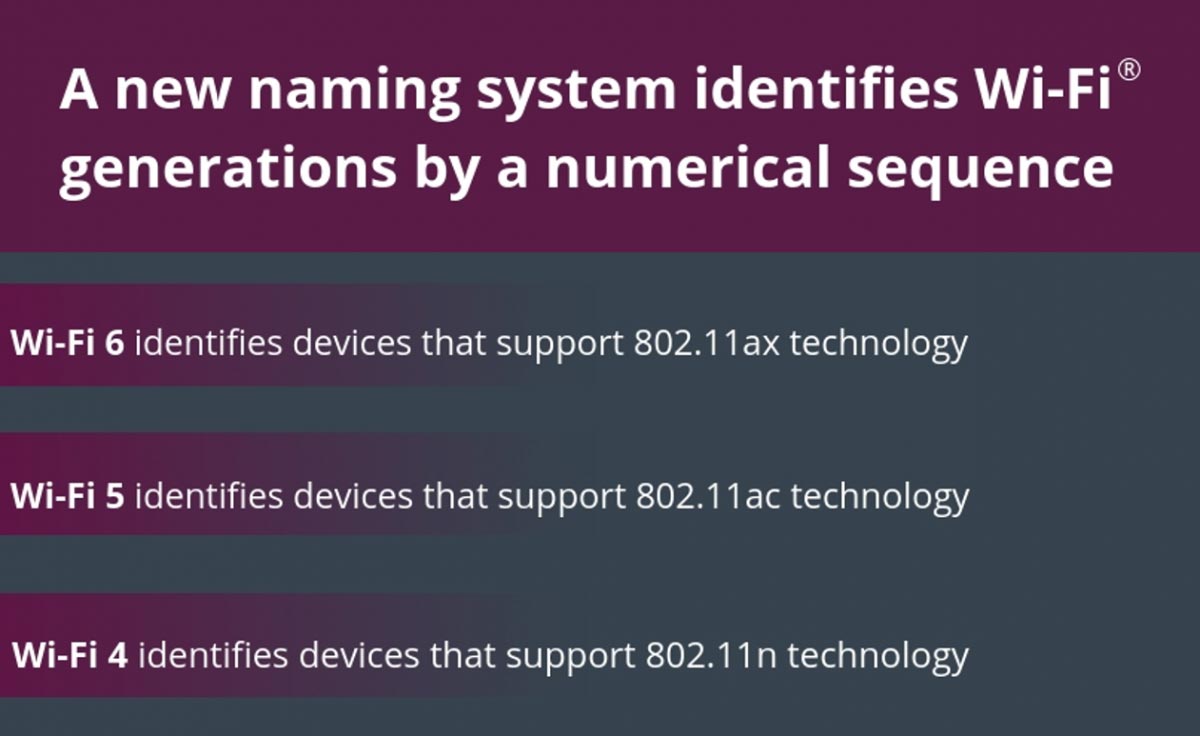Wi-Fi 6: What It Is and Why It’s Better
Wi-Fi 6: What information technology is and why it'due south improve

What'southward in a name? For the Wi-Fi Alliance's new router naming convention, it'south not only an opportunity to cut through the technical jargon with a directly-frontwards numbering convention, but also to debut Wi-Fi 6 as the industry's newest standard, previously known every bit 802.11ax. An upcoming augmentation of information technology that tin can take advantage of 6GHz transmissions volition be called Wi-Fi 6e.
Meant to simplify and distinguish between different generations of Wi-Fi products, the naming system assigns a number to each protocol. Higher Wi-Fi rating numbers correspond to newer devices, technology and meliorate performance. In other words, the IEEE 802.xi due north, air-conditioning and ax names are out and Wi-Fi four through Wi-Fi 6 are in.
- Run into the all-time Wi-Fi routers nosotros've reviewed
- What internet speed do you need? How many Mbps is enough
- The future of wireless: Wi-Fi 7 explained

"Information technology is a way to telegraph to users the Wi-Fi feel they volition get," said Kevin Robinson, vice president of marketing at the Austin-based Wi-Fi Brotherhood. For case, getting an 802.11ac router is the default choice today and carries a Wi-Fi 5 rating. People continue to purchase older 802.11n systems, which go a Wi-Fi 4 rating. On the other hand, 802.11 a, b and g devices are likewise erstwhile to be included in the Wi-Fi Alliance's numerical ratings. (Wi-Fi 7 corresponds to 802.11be, simply information technology won't be here until the end of 2023.)
"The idea is to give buyers the information they need to make an informed selection," Robinson said. "Wi-Fi six is the all-time you tin get."
Higher numbers, better performance
The new Wi-Fi vi rating indicates a serial of improvements that volition boost performance while amend accommodating the needs of a diverse group of devices, from tablets, phones and notebooks to thermostats, phones and video cameras. To go the nearly out of the changes will require both Wi-Fi 6 routers and devices. Robinson said, "Wi-Fi half-dozen will still work with Wi-Fi 4 and Wi-Fi 5 devices simply work best with Wi-Fi 6 equipment."

While the new routers risk being an alphabet soup of acronyms, there's a lot going on with the new gear. To start, Wi-Fi 6 uses Multi-User Multiple Input, Multiple Output (MU-MIMO) transmissions, a technology that debuted on 802.11ac devices but were more often on loftier-end systems like the Linksys EA8500 (an early model from 2015) and the more modern Netgear Nighthawk XR500. Information technology also doubles the potential bandwidth from four streams to viii streams.
Another big change is that 802.11ac's 256 Quadrature Amplitude Modulation (QAM) is replaced by Wi-Fi 6's 1024 QAM dissemination over up to eight spatial data streams. These extra channels are augmented by Wi-Fi half-dozen'southward Performance Way Indication (OMI). Call up of OMI as a communication portal that transmits not the data packets just information about the peak bandwidth that the receiver tin efficiently employ. The actual information is then sent in this streamlined format.
In add-on to using upwards to eight spatial information streams, Wi-Fi 6 uses Orthogonal Frequency Sectionalization Multiple Access (OFDMA) to squeeze more data into the bachelor spectrum compared with Wi-Fi v'south (aka 802.11ac) Orthogonal Frequency Partition Multiplexing (OFDM). The fob is that OFDMA divides the bachelor radio spectrum into smaller units to raise throughput and efficiency based on the data traffic catamenia.
Wi-Fi 6 routers will besides be smarter at moving information, thank you to a characteristic called Target Wake Time (TWT). Aimed at bombardment-powered devices like thermostats and water leak sensors, TWT can simultaneously extend the device's bombardment life while making the network more than efficient past connecting to the router simply when needed, fugitive frequent battery-wasting wake-up calls.
Wi-Fi keeps getting smarter and faster
What can you lot expect from Wi-Fi six? The individual changes add upwardly to a maximum throughput of ix.6Gbps under platonic conditions. Wi-Fi 6 will be able to continue a step alee of the diversity of devices in homes to permit simultaneous 4K video streaming, gaming and utilize by a wide diverseness of smart home products, like locks, thermostats and remotely controlled light switches. "Information technology's for the home of the future," Robinson said.
Only Wi-Fi technology isn't sitting nonetheless, but instead continues to evolve at a rapid pace. The latest development is the FCC's recent approval of Wi-Fi 6e, which takes the Wi-Fi 6 spec a couple steps further. Wi-Fi 6e has the ability to add together on 6GHz transmissions to Wi-Fi vi'southward the 2.four- and 5GHz. The Federal Communications Commission merely canonical the use of the segment from 5.925- to 7.125GHz every bit an addition to the unlicensed segments of the spectrum.

What does Wi-Fi 6e offer? A lot because the extra bandwidth has the power to speed the data catamenia with the low latency of one- or ii millisecond that gamers should dear. Of the more than 100 new data channels, there're a slew of 20- and xl-MHz ones that more than than doubles those bachelor in Wi-Fi six. In add-on, Wi-Fi 6e adds 7 160MHz channels and up to 14 80MHz channels for extra performance.
While Wi-Fi 6e'southward top throughput sticks to Wi-Fi six's 9.6Gbps throughput limit, y'all might actually get better overall performance by spreading the data out of its three bands to reduce congestion. This might come in handy for those whose networks are saturated with lots of data packets zipping dorsum and forth. On the other mitt, the 6GHz band's data will likely exist available at an even brusque range from the router than electric current 5GHz transmissions. This extra shot of operation could exist just the matter to spur the use of augmented and virtual reality, which require a lot of information merely non the range that door locks, thermostats or Web cams might demand.
Wait to outset seeing the underlying fries needed to make routers and receivers from Broadcom, Intel, Qualcomm and others later this twelvemonth. The Wi-Fi Alliance anticipates that the bodily devices should be on sale past early in 2021. The group forecasts that sales could exceed 316 million Wi-Fi 6e devices for next year.
This is just the first. Wi-Fi seven is around the corner and could make the current spec look like a slowpoke. What it can exercise and when information technology'll appear is anyone'southward guess, but if the recent spacing between new protocols continues, expect Wi-Fi 7 sometime around 2023.
- Stretch your coverage with the all-time Wi-Fi extenders
- The best mesh routers for big homes and buildings
Source: https://www.tomsguide.com/us/wifi-6-explained,news-28274.html
Posted by: richmondknevity.blogspot.com


0 Response to "Wi-Fi 6: What It Is and Why It’s Better"
Post a Comment